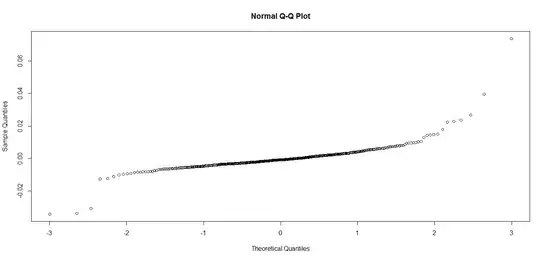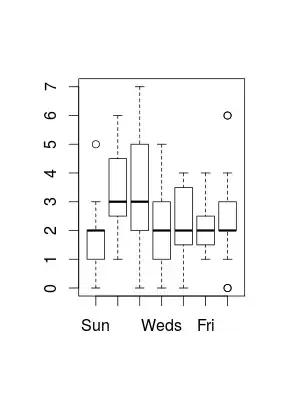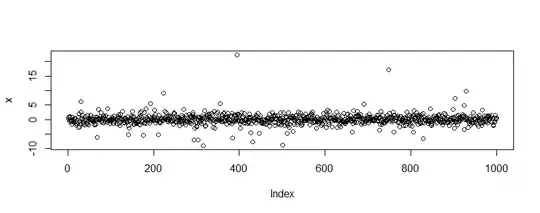I have a data on some overall conversion rates (i.e. out of x users visiting, y buy something hence y/x is my conversion rate, essentially proportions) over a time period, now this overall proportion can be broken by if they came from channel 1, channel 2 or channel 3 and for each channel there would be again similar proportions. My objective is to see how these proportions from different channels impact the overall proportion
I have run a simple linear regression in R and below is the result.
Call:
lm(formula = target_variable ~ . - date, data = data_lcr)
Residuals:
Min 1Q Median 3Q Max
-0.034173 -0.003217 -0.000704 0.002331 0.073845
Coefficients:
Estimate Std. Error t value Pr(>|t|)
(Intercept) -0.0049876 0.0006139 -8.124 7.4e-15 ***
exp1 0.0785438 0.0086230 9.109 < 2e-16 ***
exp2 0.0290531 0.0175517 1.655 0.0987 .
exp3 -0.1026385 0.0080550 -12.742 < 2e-16 ***
exp4 1.0760312 0.0669632 16.069 < 2e-16 ***
exp5 0.2466149 0.0195844 12.592 < 2e-16 ***
---
Signif. codes: 0 ‘***’ 0.001 ‘**’ 0.01 ‘*’ 0.05 ‘.’ 0.1 ‘ ’ 1
Residual standard error: 0.007503 on 358 degrees of freedom
Multiple R-squared: 0.9843, Adjusted R-squared: 0.9841
F-statistic: 4503 on 5 and 358 DF, p-value: < 2.2e-16
The Model has great R-squared which is significant, all variables turn out to be significant. Next I am checking if my residuals are normally distributed
> skewness(fitlm$residuals)
[1] 2.863341
> kurtosis(fitlm$residuals)
[1] 33.83711
Shapiro-Wilk normality test
data: fitlm$residuals
W = 0.72781, p-value < 2.2e-16
Anderson-Darling normality test
data: fitlm$residuals
A = 17.485, p-value < 2.2e-16
These tests suggest that my residuals are not normally distributed. Should I still consider the model based on R-squared and F-Value or make some corrections? Please suggest



